
North Carolina’s scorching summer heat may be perfect for an afternoon by the pool, but too much sun can harm and exhaust your grass. But have no fear! Your North Carolina lawn can still thrive in the summer with the proper care. To help it look its best, here are a few summer lawn care tips for North Carolina lawns.
Summers are meant to be relaxing, but lawn diseases and pests don’t take a vacation. Lawn care is important even during the dog days of summer. Sit back and soak up the sun as we explore the best ways to keep your lawn green and growing all summer long.
June Lawn Care Tips for North Carolina
June in North Carolina is warm and wet, averaging around 75 degrees Fahrenheit. It’s the perfect weather to get started on your summer lawn care. There are quite a few things you can do to prepare your lawn for the scorching summer months ahead.
Tip 1: Dethatch Your Warm-Season Grass
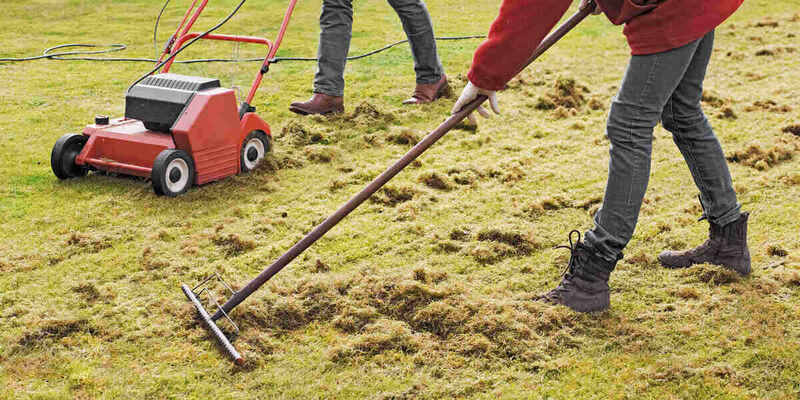
Thatch is dead grass and other debris that forms on top of soil over time, and warm-season grasses are particularly prone to thatch.
When thatch gets thicker than about half an inch, it can prevent water and nutrients from reaching your grassroots. Dethatching enables nutrients to enter the soil and encourages steady growth. It also helps the grass resist diseases and pests (to learn more, check out Benefits of Dethatching the Lawn).
For that reason, thatch should be removed regularly with either a rake, dethatcher, or verticutter during the beginning of the growing season for warm-season grass.
Some signs your lawn needs dethatching include:
- Dry spots
- Decreased grass resilience
- Lawn diseases
- Insect problems
- Grass is bouncy or spongy when walked on
Tip 2: Aerate Warm-Season Grass
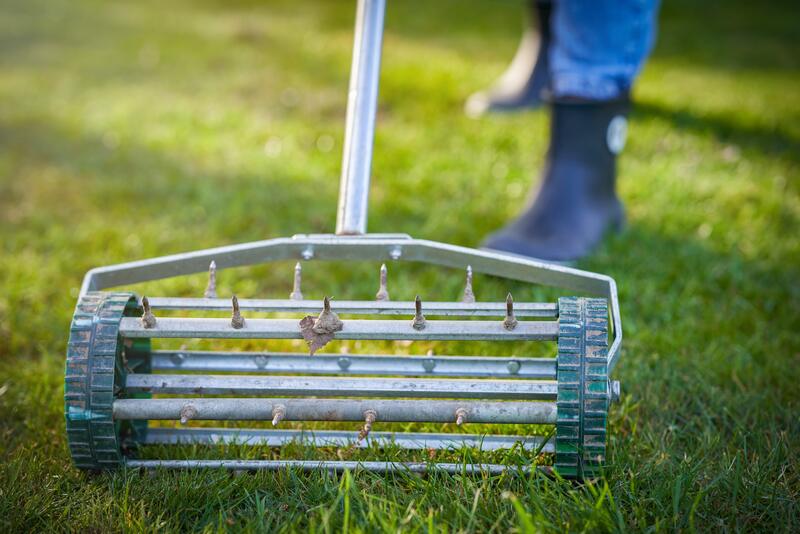
You should aerate your warm-season grasses during the start of the growing season in March or April. Aerating warm-season grasses in early summer allows air to flow through the soil and reach the roots of your plants, helping them to grow stronger and more resistant to diseases.
The benefits of aerating are many:
- Improves root growth
- Enriches the soil
- Reduces thatch build-up
- Improves drainage
There are two kinds of aeration:
- Core aeration: Generally recommended for home lawns, core aeration involves removing plugs of soil.
- Spike aeration: Poking small holes in the soil rather than removing plugs
You should aerate your soil every year while the grass is still actively growing. Fertilizing and overseeding should be done right after aerating.
Tip 3: Overseed Warm-Season Grass
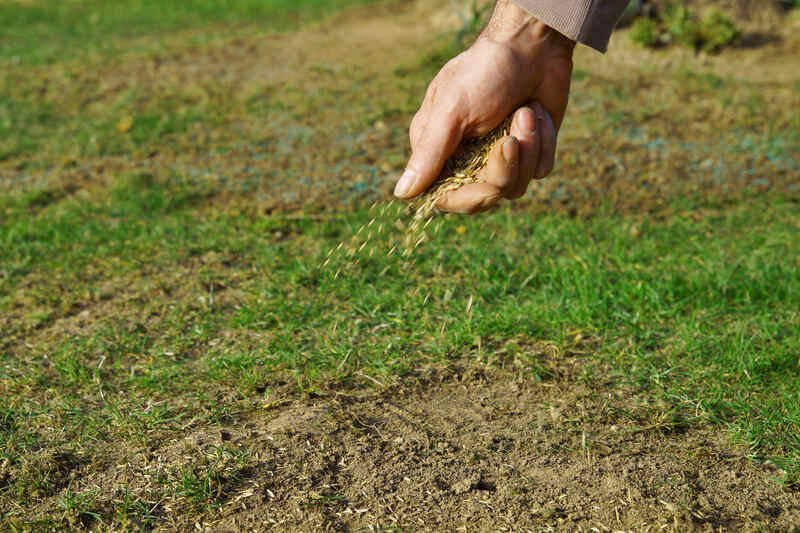
Overseeding is adding grass seed to your lawn to fill in bare spots and improve its overall density. If you have warm-season grasses, the best time to overseed your lawn is in late spring or early summer.
However, if you have a cool-season grass type, you should not overseed during the summer. Cool-season grasses do better when overseeded during the fall when temperatures are cooler and more conducive to seed germination.
Tip 4: Fertilize Warm-Season Grass
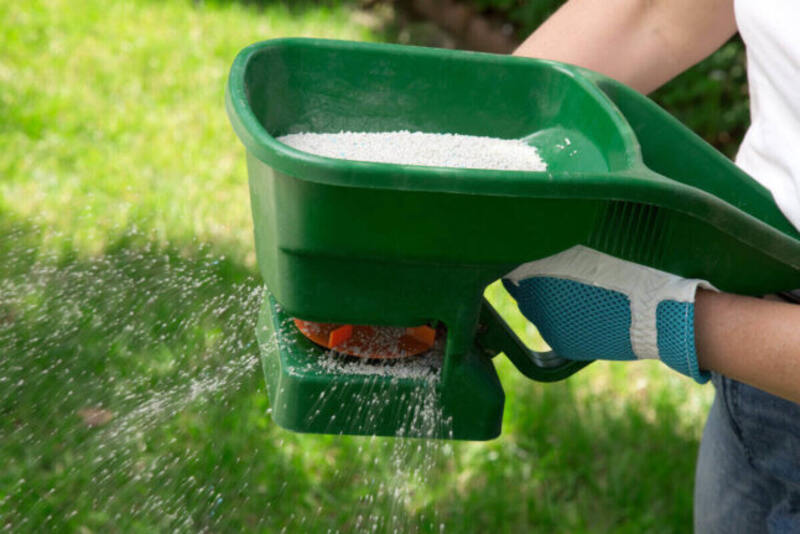
After performing a soil test in the spring to determine your soil’s pH and nutrient levels, it’s time to feed your soil with the necessary nutrients during the summer.
Fertilizers are divided into several categories:
- Slow-release fertilizers: Release nutrients into soil over time; generally better for grasses and the environment
- Quick-release fertilizers: Provide a quick nutrient boost but are not as beneficial for grasses and pose a greater hazard to the environment
- Liquid fertilizers: Have to be diluted with water and are normally quick-release
- Granular fertilizers: Come in granular form and are usually slow-release
But when do you fertilize your North Carolina lawn?
Fertilizing in the late spring to early summer works best for warm-season grasses. But you should never fertilize when the weather gets too hot (above 85 degrees). Cool-season grasses like tall fescue do better when fertilized in the fall or early spring. Fertilizing them in the heat of the summer or during dormancy stresses the grass.
Fertilizing options include:
- Grass clippings: This method is easy, cheap, and quick, plus it’s safe and harmless to the environment. However, to avoid damaging your grass, make sure your clippings aren’t wet or excessive.
- Organic fertilizers: If your soil test showed deficiencies, using a slow-release organic fertilizer is the next best thing. There are a variety of organic fertilizers out there. Just note that while organic fertilizers are usually safer for the environment, they’re not hazardless. You still need to take safety precautions to use them correctly.
- Chemical fertilizers: Many homeowners also use chemical fertilizers, which come in quick-release or slow-release forms. However, these may harm the environment and create safety hazards for people and animals. It’s essential that you follow instructions and take safety precautions when using any fertilizer.
Here are some tips and tricks for successfully fertilizing your lawn:
Don’t fertilize under the wrong conditions, such as during a drought. However, if it rains, don’t get the fertilizer out just yet, either; wet grass may create runoff. Instead, fertilize on a warm, wind- and rain-free day, and evenly apply your fertilizer and water afterward.
Tip 5: Apply Fungicide Throughout the Summer
Warm, humid weather invites fungi to thrive on your lawn. Common North Carolina fungi include:
- Brown patch (What to Know About Brown Patch in Charlotte)
- Red thread (Red Thread and Pink Patch)
- Large patch (Large Patch Lawn Disease)
- Leaf spot (How to Get Rid of Leaf Spot)
- Dollar spot (What is Dollar Spot?)
- Rust (Leaf Rust in Grass)
To prevent fungal growth, take care of your lawn and avoid overwatering it. If you do notice any signs of fungus, deal with them immediately to prevent the situation from getting worse.
Additionally, applying a fungicide throughout the summer months can help control the growth of fungi. But it’s a toxic substance that poses hazards to people and animals. Be sure to use it correctly and responsibly. You can also consider organic fungicides, but take note that no fungicide is risk-free.
July Lawn Care Tips for North Carolina
July is the hottest month of the year, with temperatures averaging 78 degrees, staying hot and humid. It’s not ideal weather for lawn care, but thankfully, you’ll have already gotten most of the hard work done during the previous month.
There are still a few things to work on, though.
Tip 1: Prevent and Get Rid of Pests
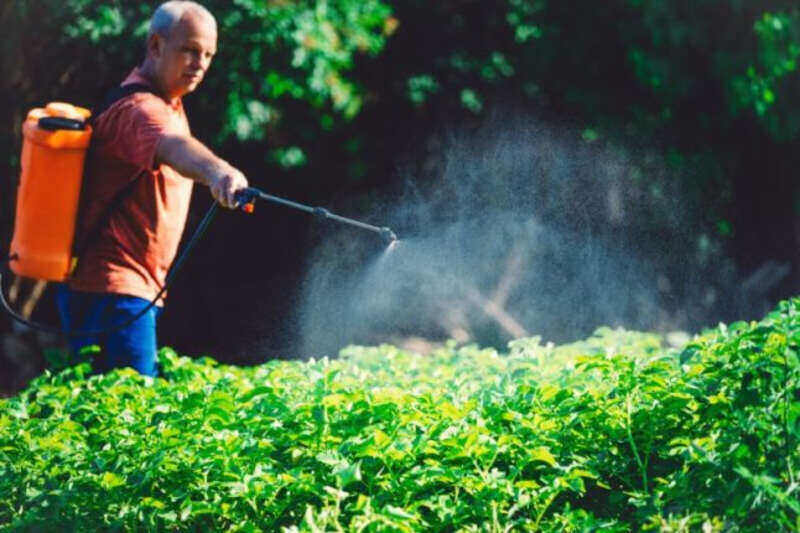
Another common lawn problem is bugs. Some insects are beneficial to your lawn, but others are a nuisance, often demolishing plants and ruining your enjoyment of your outdoor space. Some pests, like ticks, also pose a health hazard.
Here are some of the North Carolina’s most common summer pests:
- Mole crickets (How to Get Rid of Mole Crickets)
- Ticks (How to Get Rid of Ticks in Your Yard)
- White grubs (How to Kill Lawn Grubs)
- Clover mites
Taking good care of your lawn is the best method for repelling pests. Here are some of the best ways to prevent pests from taking over your lawn:
- Clear standing water and remove damp yard debris.
- Remove debris like dead plants, branches, and trash from your yard.
- Dethatch and aerate at the proper time for your grass type.
If the above methods don’t quite do the trick, there are earth-safe pest control products to consider.
Eco-friendly pest control products you can use include:
- Beneficial nematodes (How to Use Beneficial Nematodes)
- Boric acid
- Diatomaceous earth (How to Use Diatomaceous Earth)
- Pyrethrin
- Nicotine
- Rotenone
Applying insecticide in late June or early July will help control many common North Carolina insects, but this should be used as a last resort. If you choose to use harsh chemical pesticides, choose a product with low toxicity levels and carefully follow the instructions on the packaging. Remember that pesticides kill everything, including beneficial insects like bees.
Tip 2: Water Deeply
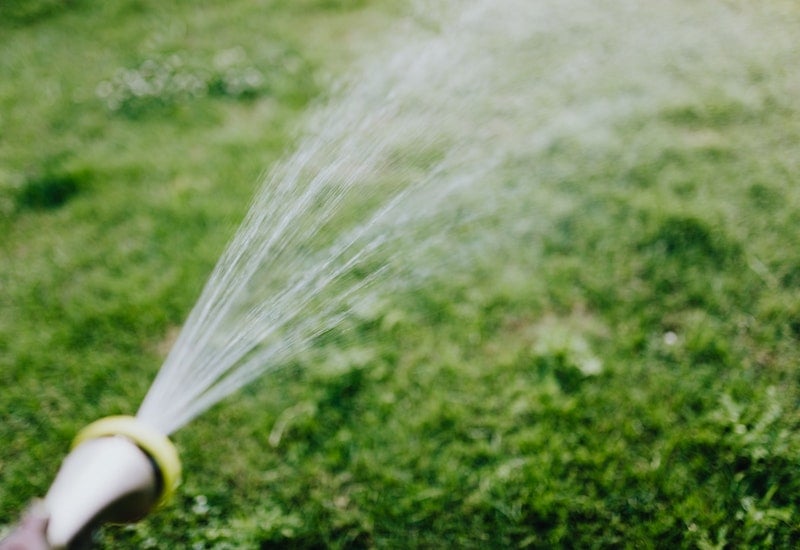
It’s easy for you to remember to stay hydrated when the temperatures rise, but don’t forget about your lawn. Your grass gets thirsty in hot weather, just like you do. If your grass needs water, then it will give you a few telltale signs to let you know:
- Grass doesn’t spring back after being walked on
- Starts to turn yellow
- Stunted blade growth
- Dry, cracked soil
- Wilting grass blades
Here are some tips for watering your lawn during summer:
- Water early in the morning: Lawn care experts recommend watering your lawn between 4 and 8 a.m. If you water later in the day, the water will evaporate. Watering in the evening may cause fungus growth.
- When you do water, water deeply and infrequently: This promotes deep-root growth and drought tolerance.
- Avoid watering when your grass goes dormant: Cool-season grasses go dormant in the summer. Overwatering dormant grass can encourage weeds and put your grass in a state of stress, so you should only water every three weeks if there hasn’t been any rain.
- If your grass isn’t dormant, aim for 1 to 1.5 inches of water per week: This translates to 25 to 30 minutes of watering, twice a week. This will encourage your grass to grow deeper roots, making it more resistant to drought.
August Lawn Care Tips for North Carolina
Though still hot, August in North Carolina drops slightly, staying around 77 degrees. It is also the wettest month of the year, so expect plenty of rain.
Tip 1: Watch Out For Weeds
If your lawn suffers because of the summer heat, it gets weaker, giving weeds an opportunity to grow. There are a variety of summer weeds in North Carolina, for example:
- Chickweed
- Yellow nutsedge
- Crabgrass
Weeds are less likely to grow on thick, healthy lawns. Here are some tips for keeping a weed-free lawn:
- Remove weeds before they bloom or spread.
- Remove the entire plant, including its roots, rhizomes, tubers, or bulbs.
- When removing weeds with a taproot, use a screwdriver, a dandelion fork, or a spade.
- When removing toxic weeds, use gloves.
- Only fertilize your lawn after you’ve removed all the weeds.
Removing weeds by hand is an efficient and effective method for getting rid of small patches of weeds. However, you can also use herbicides, which are often used for large areas of widespread weeds that may be difficult to remove manually.
Here are the most commonly used herbicides in the summer:
- Post-emergent herbicide: This herbicide targets weeds that have sprouted, disrupting their growth and killing them. Make sure not to use post-emergent herbicides when temperatures exceed 85 degrees or it can damage your grass.
- Iron-based herbicide: Specifically targets broadleaf weeds.
- Organic herbicide: Sometimes, organic herbicides are efficient. They also have the added benefit of being better for the environment. Just be aware that organic ingredients may pose hazards, too; always apply any herbicides with caution.
Herbicides may be harmful to you, animals, and the environment. It’s important to use herbicides carefully and follow the instructions on the label.
It’s also possible to kill weeds with boiling water, salt, or vinegar, which are safer alternatives if you have children or pets.
Tip 2. Dethatch Cool-Season Grass
Cool-season grasses such as Kentucky bluegrass, tall fescue, and perennial ryegrass should be dethatched in late summer, at the beginning of their growing season, so that they can recover quickly. If you don’t dethatch, water can accumulate and suffocate the roots.
Tip 3: Mow Your Grass Taller
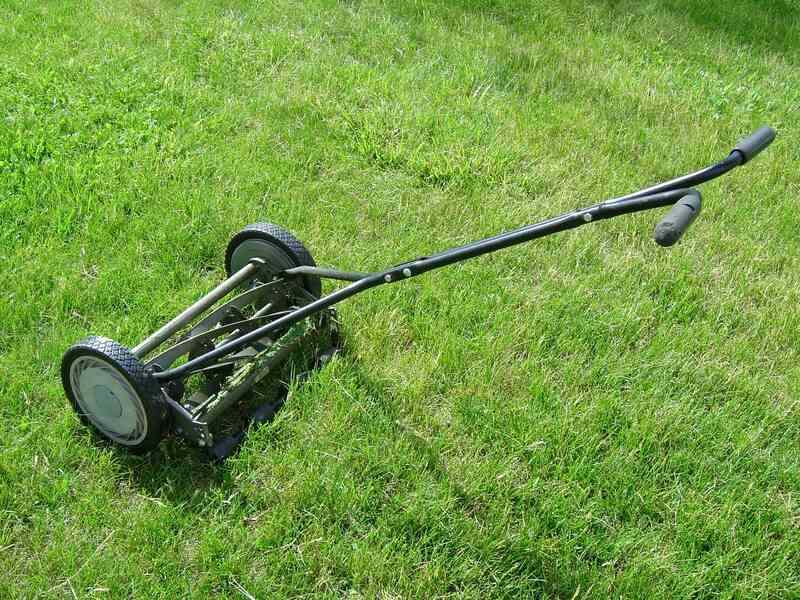
During the later months of summer, your grass will need to be mowed less frequently. Taller grass is better at resisting hot and dry weather, so make sure to adjust your mower blade accordingly. Here are some of the biggest benefits of keeping your grass taller in the summer:
- More shade above your soil will prevent water from evaporating.
- Your grass will recover more quickly from cutting because it will have more energy.
- Deeper roots will help your grass stay hydrated.
- More grass will create more surface area for photosynthesis.
Depending on the grass type and mowing habits, you can add up to 1 inch to your standard grass height with some grasses.
Be sure to mow on the tall side of the range for these best grass types for North Carolina:
| Type of Grass | Summer Mowing Height |
| Bermudagrass | 1 to 2 inches |
| Centipedegrass | 1 to 2 inches |
| Zoysiagrass | 1 to 2.5 inches |
| St. Augustinegrass | 2.5 to 3 inches |
| Tall fescue | 2 to 4 inches |
| Fine fescue | 1 to 3 inches |
| Kentucky bluegrass | 2 to 3 inches |
Keep in mind that if you have a warm-season grass type, you’ll need to mow more often because it grows more during warm weather.
Before you mow, remember:
- Mow only one-third of your grass blades at a time.
- Mow in the mid-morning to protect your grass from the heat of the day.
- Don’t mow during drought when grass recovers slowly.
- Keep your mower blades sharp to help your grass heal faster and become more resistant to diseases
FAQ About Summer Lawn Care in North Carolina
What Grass Stays Green Year-Round in North Carolina?
Tall fescue is a popular grass type for homeowners in North Carolina since it’s reliable and stays green all year round. Tall fescue is easy to grow and can thrive in sun and shade.
Other cool-season grasses like Kentucky bluegrass, perennial ryegrass, and fine fescues will stay green during the winter but will turn brown in summer, especially along the coastal plain.
What is the Best Grass Type for North Carolina?
The best grasses for North Carolina’s cooler climates are cool-season grasses, such as Kentucky bluegrass, fescues, and ryegrass. However, the western and central regions of North Carolina fall in a “transition zone,” so both warm-season grasses and cool-season grasses can thrive in the state, depending on the region.
The best grasses for the coastal plain of North Carolina are Bermudagrass, Zoysiagrass, centipedegrass, St. Augustinegrass, and carpetgrass.
Which Native North Carolina Plants Bloom in the Summer?
If you want your North Carolina lawn to be a haven for pollinators this summer, here are a few native North Carolina plants to consider:
- Cardinal flower (Lobelia cardinalis)
- Blazing star (Liatris spicata)
- Swamp milkweed (Asclepias incarnata)
- Lanceleaf coreopsis (Coreopsis lanceolata)
- Purple coneflower (Echinacea purpurea)
- Carolina phlox (Phlox carolina)
Keep Your Lawn Looking Beautiful
Some lawn maintenance jobs aren’t easy. If you could benefit from expert help, Lawnstarter will connect you with local lawn care professionals in your area today. They’ll keep your lawn in the Tar Heel State looking good year-round, not just in summer!
Source:
Colorado State University Extension
National Weather Service: June 2022, July 2023, August 2023
Main Image Credit: Stilfehler / Wikimedia Commons / CC BY-SA 4.0